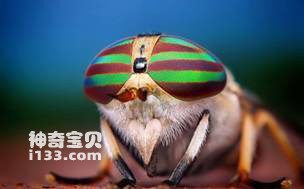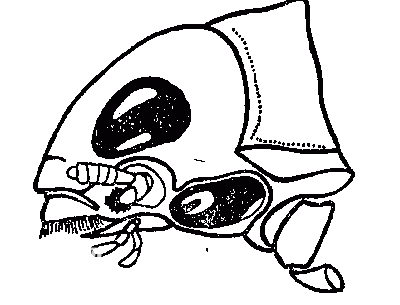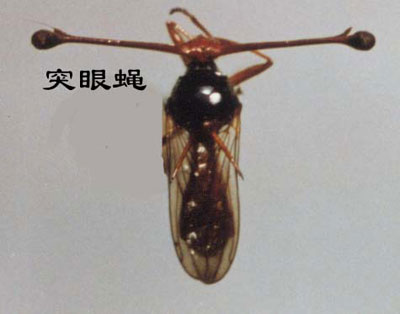Do insects have the same eyes as humans? Can they distinguish different colors? Let’s talk about these issues below.
First of all, we can definitely say that the eyes of insects are different from those of humans. The eyes of insects include single eyes and compound eyes, and single eyes can be divided into dorsal single eyes and side single eyes. Except for parasitic insects whose eyes have degenerated due to living a parasitic life for a long time, or although they have eyes, they no longer function as vision, adults of general insects and nymphs of incomplete metamorphosis have a pair of compound eyes, and 1 to 3 on the top of their heads. One eye on the back. The larvae of the complete metamorphosis type have 1 to 7 lateral ocelli on both sides of the head. Insects respond to changes in external light through single eyes and compound eyes, and carry out activities such as foraging, courtship, orientation, dormancy, and diapause.

The compound eye is the main visual organ of insects and usually occupies a prominent position on the head of insects. The compound eyes of most insects are round, oval or kidney-shaped. The compound eyes of some insects are divided into upper and lower parts on each side, becoming "four-eyed" insects, such as long-eyed beetles, black beetles (see the picture on the right) and some species of floating animals. Especially for the black beetle that lives in the water, because its compound eyes are divided into upper and lower parts, it can detect both targets on the surface and targets in the water when hunting. In exophthalmos, the compound eyes are located on stalk-like processes on both sides of the head.
The compound eye is composed of many hexagonal ommatidia, each of which has the same basic structure as a single eye. The larger the compound eye, the greater the number of small eyes and the stronger the vision. The number of ommatidia in a compound eye varies greatly, from as little as one ommatidium to as many as tens of thousands. For example, there is a kind of ant whose workers have only one ommatidia, butterflies have 12,000 to 17,000 ommatidia, dragonflies have 10,000 to 280,000 ommatidia, and house flies have 4,000 ommatidia.

The structure of the ommatidia is very delicate. It has a light-gathering device like a convex lens, called a corneal lens, which is a hexagonal convex lens on the surface of the ommatidium, with a conical lens connected below. The optic nerve is connected below these light collectors. . The nerves sense the light points incoming from the light collector and feel the stimulation of the light, and then form a "point image". The interaction of the images of many small eye points forms a "mosaic image". If you cut an insect's compound eye lengthwise and observe it through a magnifying glass or microscope, the small multi-edge eyes gather together, much like a wonderful kaleidoscope.

Although the compound eyes of insects are composed of many small eyes, their vision is far worse than that of humans. Dragonflies can see 1 to 2 meters, and flies can only see 40 to 70 millimeters. However, insects are very sensitive to moving objects. When an object suddenly appears, it only takes 0.01 seconds for the bees to respond. Predatory insects react more quickly and agilely to moving objects.
Insects, like humans, can distinguish different colors, but they experience different wavelengths. The wavelength range that insects can feel is 240 (ultraviolet light) to 700 (yellow, orange) nanometers. Bees cannot distinguish between orange-red and green; nettle butterflies cannot see green and yellow-green. Insects generally cannot sense the color red.
animal tags:
We created this article in conjunction with AI technology, then made sure it was fact-checked and edited by a Animals Top editor.